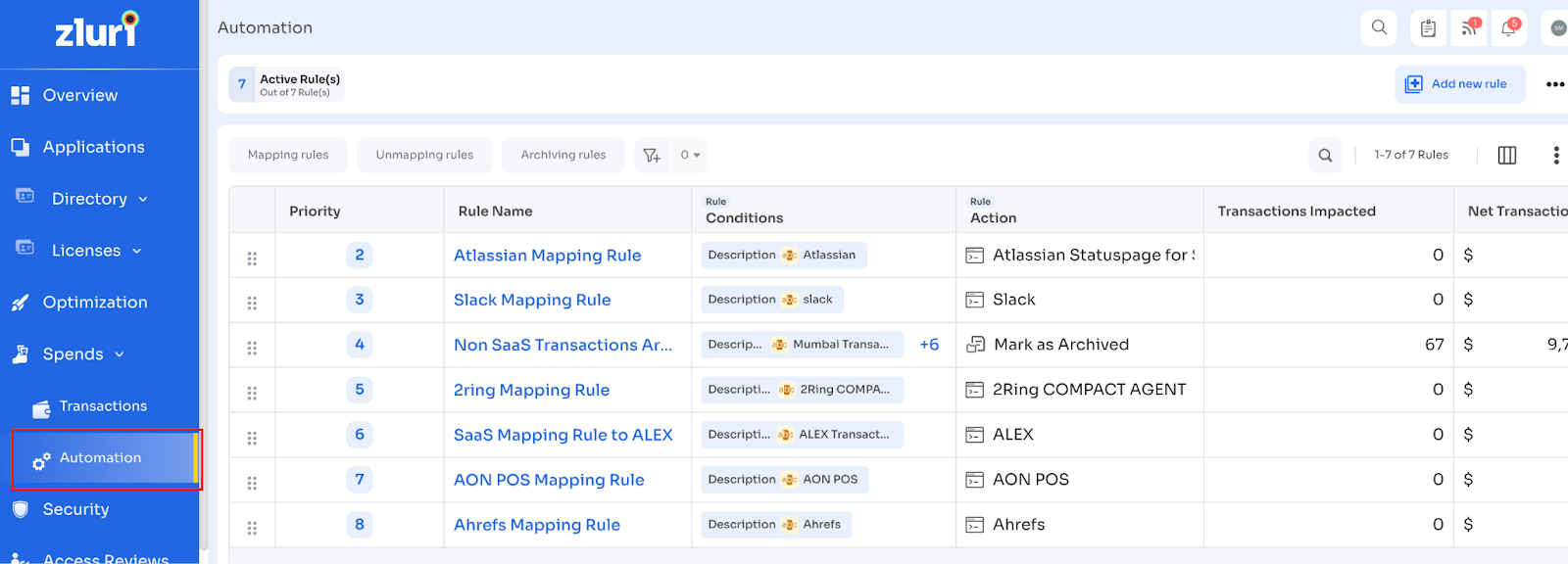Transaction Rules
This article explains transaction mapping automation in Zluri
Transaction Rules let you map, unmap, and archive transactions automatically based on pre-configured conditions and actions. Get accurate and reliable spend reporting by mapping transactions to applications.
Key benefits
Accurate transaction-to-application mapping
Currently, the system uses a fuzzy mapping logic for transactions to applications, which is not 100% accurate. With transaction mapping rules, you can achieve 100% accuracy in mapping transactions to applications.
Expanded coverage of transaction mapping
The existing mapping algorithm does not map all transactions to applications, leading to incomplete SaaS spend reporting. With just one rule, you can map all current and future transactions.
Automation
Once you create a rule, you no longer need to manually map transactions. The rule automatically maps all future transactions that meet the specified conditions.
Feature overview
You can find the ‘transaction rules’ feature under the Spends -> Automation tab. This tab is dedicated to creating, managing, and viewing automation rules.

List of rules
This page lists all the rules you have created, along with their details.
- You assign a priority to each rule, and the system executes it based on its order in the list.
- If two rules apply to a transaction, the system executes only the one with the higher priority.
See the documentation for creating and editing transaction rules.
Additional features
Zluri mapping AI
Zluri AI identifies patterns from transaction details and vendors to map them to applications.
- Zluri AI executes after all user-created rules.
- It is on by default, but you can turn it off for a completely deterministic system.
Rule modification
You can edit, deactivate, or delete rules with the following considerations:
- Editing allows you to revert or reprocess transactions based on the updated rule.
- Deactivation stops the rule from running on future transactions.
- Before deleting a rule, you must revert all transactions processed by it.
Force execution
You can force execute rules to override even manually mapped transactions:
- Execute all rules.
- Execute rules on unrecognized transactions only.
Filters on rules table
You can filter rules by:
- Rule name
- Action type
- Status
Best practices
- Create one rule for each application based on common descriptions or vendors.
- Configure rules to apply to both existing and future transactions.
- Execute rules from the unrecognized transactions tab to avoid impacting already mapped transactions.
- If a transaction is incorrectly mapped, unmap it and re-execute all rules on unrecognized transactions.
Updated 3 months ago
